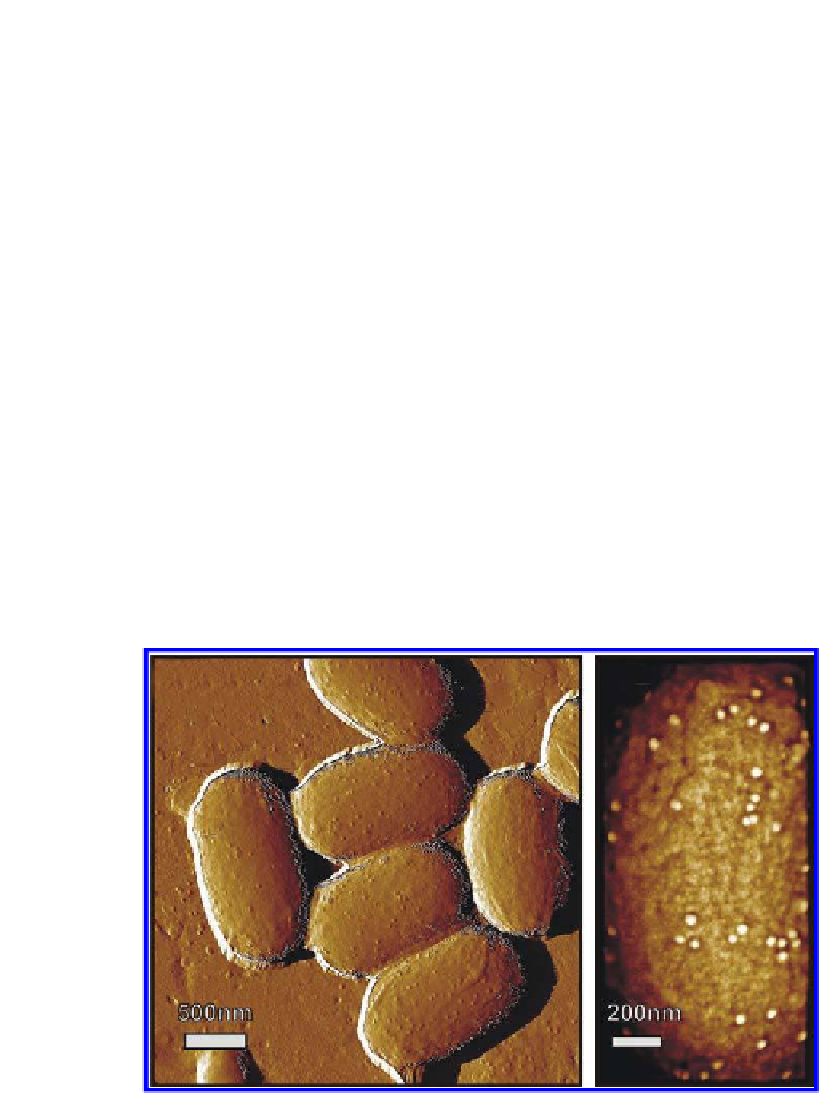Biology Reference
In-Depth Information
Detection of surface-exposed proteins is paramount for improving the
fundamental understanding of their functional properties as well as for the
development of detection, attribution and medical countermeasures against
these pathogens.
In the past several years, considerable progress, in particular towards
probing of microbial and cellular systems, has been made in identiication
and mapping of speciic receptors and ligands on the biological surfaces
using adhesion force mapping and dynamic recognition force mapping (for
reviews, see Refs. 40 and 41). EM-based immunolabelling techniques have
become an important tool for the elucidation of biological structure and
function.
42,43
AFM immunogold markers were utilized in the past for imaging
of proteins and macromolecular ensembles.
44-48
We have recently utilized
10
AFM-based immunochemical labelling
procedures for visualization and mapping of the binding of antibodies,
conjugated with nanogold particles, to speciic epitopes on the surfaces of
Bacillus
spores. We have established the immunospeciicity of labelling,
through the utilization of speciic anti-
B. atrophaeus and B. anthracis
polyclonal and monoclonal antibodies, which were targeted to spore coat and
glycoprotein is the immuno-dominant epitope on the surface of
B. anthracis
spores.
10
(a)
(b)
Figure 4.7.
AFM images of speciic binding of anti-
B. anthracis
gold-labelled polyclonal
antibodies to the
B. anthracis
spore exosporia. Images reproduced with permission
from Ref. 10. © (2009) American Chemical Society.
















Search WWH ::

Custom Search